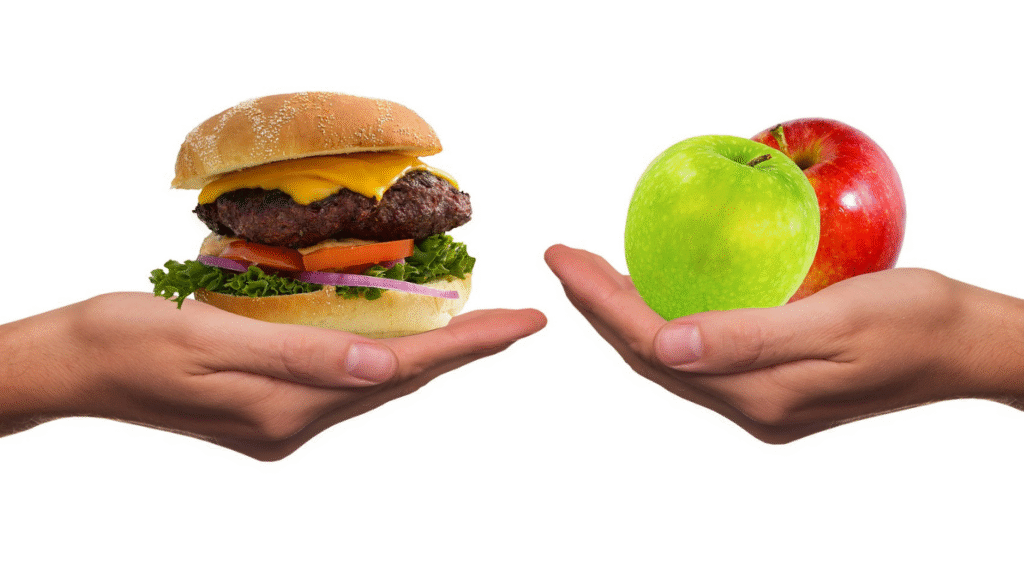Welcome to FitLifeZ, where we prioritize your health and wellness above all else. I am Muhammad Shakeel, and with five years of experience as an article writer specializing in health, I am here to guide you through an effective one-month diet plan designed to aid your weight loss journey.
This plan is structured to help you shed pounds in a healthy, sustainable way, ensuring that you not only lose weight but also improve your overall well-being.
Understanding Weight Loss
Before diving into the diet plan, it’s crucial to understand the basics of weight loss. At its core, weight loss occurs when you burn more calories than you consume. This calorie deficit can be achieved through a combination of dietary changes and increased physical activity.
However, successful weight loss is not just about cutting calories; it’s about making healthier food choices, practicing portion control, and maintaining a balanced diet that supports your body as needs.
Setting Realistic Goals
Setting realistic goals is an essential step in any weight loss journey. Aiming to lose 1-2 pounds per week is considered safe and sustainable by health professionals. This goal can be achieved with a daily calorie deficit of 500-1000 calories, which can be managed through diet and exercise.
The 1 Month Diet Plan
This one-month diet plan is designed to be flexible and adaptable to individual preferences and needs. It focuses on whole, nutrient-dense foods while minimizing processed foods, added sugars, and unhealthy fats.
Week 1: Establishing a Foundation
Day 1-7: Clean Eating
Breakfast:
Option 1: Oatmeal topped with fresh berries and a sprinkle of china seeds.
Option 2: Greek yogurt with sliced almonds and honey.
Lunch:
Option 1: Grilled chicken salad with mixed greens, cherry tomatoes, cucumber, and olive oil dressing.
Option 2: Quinoa and black bean bowl with avocado and lime.
Dinner:
Option 1: Baked salmon with steamed broccoli and quinoa.
Option 2: Stir-fried tofu with mixed vegetables and brown rice.
Snacks:
– Fresh fruit (apple, banana, or orange)
– Nuts or seeds (almonds, walnuts, or pumpkin seeds)
Hydration:
– Aim for at least 8 glasses of water per day. Herbal teas and infused water can also contribute to your hydration goals.
Week 2: Incorporating Variety
Day 8-14: Introducing New Flavors
Breakfast:
Option 1: Avocado toast on whole-grain bread with poached eggs.
Option 2: Smoothie bowl with spinach, banana, and almond milk, topped with granola.
Lunch:
Option 1: Turkey and hummus wrap with spinach and bell peppers.
Option 2: Lentil soup with a side of whole-grain bread.
Dinner:
Option 1: Grilled shrimp tacos with cabbage slaw and corn tortillas.
Option 2: Vegetable curry with chickpeas and basmati rice.
Snacks:
– Carrot sticks with hummus
– Cottage cheese with pineapple
Hydration:
– Continue to prioritize hydration with water, teas, and other low-calorie beverages.
Week 3: Focusing on Balanced Nutrition
Day 15-21: Ensuring Nutrient Diversity
Breakfast:
Option 1: Whole-grain waffles with almond butter and sliced strawberries.
Option 2: Chia pudding with mango and coconut flakes.
Lunch:
Option 1: Tuna salad with mixed greens, olives, and a lemon vinaigrette.
Option 2: Grilled vegetable Panini with mozzarella cheese.
Dinner:
Option 1: Chicken stir-fry with cashews and brown rice.
Option 2: Spaghetti squash with marinara sauce and turkey meatballs.
Snacks:
– Mixed berries with yogurt
– Rice cakes with peanut butter
Hydration:
– Maintain hydration levels and consider adding a glass of water before meals to aid digestion and control appetite.
Week 4: Emphasizing Long-Term Habits

Day 22-28: Preparing for Maintenance
Breakfast:
Option 1: Scrambled eggs with spinach and feta cheese.
Option 2: Overnight oats with almond milk and mixed seeds.
Lunch:
Option 1: Quinoa salad with roasted vegetables and a balsamic glaze.
Option 2: Chicken Caesar wrap with whole-grain tortilla.
Dinner:
Option 1: Baked cod with lemon and herbs, paired with roasted sweet potatoes.
Option 2: Zucchini noodles with pesto and cherry tomatoes.
Snacks:
– Edam me beans
– Apple slices with almond butter
Hydration:
– Keep up with your hydration routine, and consider herbal teas that aid in digestion, like peppermint or ginger tea.
Important Considerations
Portion Control
Portion control is a critical aspect of any weight loss diet. Eating in moderation and learning to recognize hunger and fullness cues can prevent overeating. Using smaller plates, reading food labels, and being mindful during meals can help manage portion sizes effectively.
Physical Activity
Incorporating regular physical activity is vital for boosting metabolism and supporting weight loss. Aim for at least 150 minutes of moderate aerobic activity, such as brisk walking, cycling, or swimming, each week. Strength training exercises, like weightlifting or bodyweight exercises, can also enhance muscle mass and increase calorie burn.
Mindful Eating
Mindful eating involves paying full attention to the experience of eating and drinking, both inside and outside the body. It’s about observing how food affects your senses and acknowledging your body hunger and satiety signals. Practicing mindful eating can prevent emotional eating and increase enjoyment and satisfaction from meals.
Avoiding Common Pitfalls
Avoid skipping meals, as it can lead to overeating later in the day. Additionally, try to limit distractions during meals, such as watching TV or using electronic devices, which can lead to mindless eating.
Tracking Progress
Keeping track of your progress can provide motivation and help you stay on course. Consider maintaining a food diary or using a mobile app to log your meals and physical activity. Regularly weighing yourself or taking measurements can also provide insights into your progress, but it’s essential to remember that weight is not the only indicator of health and fitness.
Adjusting the Plan
This one-month diet plan serves as a guideline, but it’s important to adjust it according to your personal needs and preferences. If certain foods Dona suit your taste or dietary requirements, feel free to swap them for alternatives that align with the planar overall nutritional goals. Consulting with a healthcare professional or registered dietitian can provide personalized advice tailored to your individual health needs.
Conclusion
Embarking on a one-month diet plan for weight loss is a positive step towards achieving your health goals. By focusing on whole foods, practicing portion control, and maintaining an active lifestyle, you lay the foundation for sustainable weight loss and long-term wellness. Remember, the key to success is consistency and making gradual, manageable changes that you can uphold beyond this one-month period.
For more health tips and personalized guidance, feel free to visit my website, [FitLifeZ], where we provide a wealth of resources to support your health and fitness journey. As always, listen to your body, stay committed, and celebrate every milestone along the way. Here to a healthier, fitter you!

